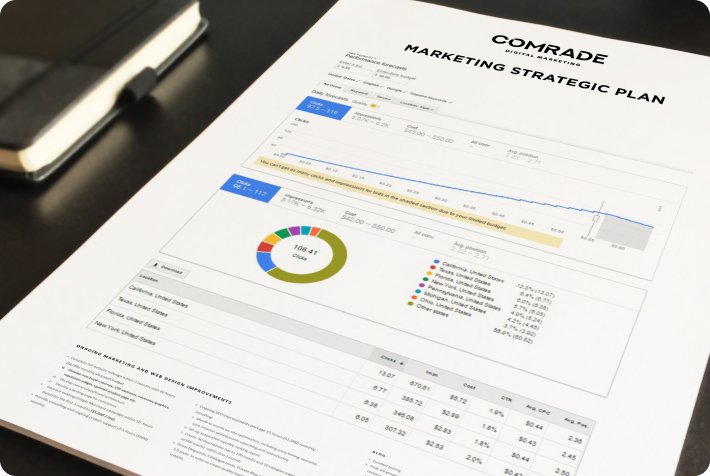94% of users need only 50 milliseconds to make a snap judgment about a business’s legitimacy based on its web design. Humans inherently react to good design because they are drawn to visually appealing things. Color, shape, size, layout, and usability are necessary to create beauty and harmony, or another way of describing it: a consistent visual language.
Today, web design helps form a favorable impression on prospective customers, nurtures leads, and garners more conversions. Websites can be utilitarian and minimalist or bright and brimming with personality, so long as they deliver the correct message.
Web Design Trends: What’s the Next Big Thing?
Top web design trends fluctuate as aesthetics change due to pervading pop culture preferences, but as Italian designer, Massimo Vignelli once said, “Styles come and go. Good design is a language, not a style.”
So, the first “rule” of web design that precedes trends is ensuring that whatever aesthetic you choose— flat design, retro design, traditional web design, etc.—speaks to and is an expression of your business’s values and personality.
Over the past few years, web design trends have embodied an increased sense of playfulness, with interactive elements that engage and delight customers.
Let’s unpack the details of the latest web design trends.
Top Website Design Trends to Implement in 2024
1. Micro Animations
Whether large-scale or small, on-page animations enhance user experience, bringing a level of excitement to website visitors. Engaged users are more likely to click, view and buy things. Generally speaking, web designers have relied on animations in hero sections and page transitions; however, new web design trends indicate a shift to accommodate large-scale animations.
Animation’s sticking power offers the ability to create versatile and exciting online experiences. From liquid motion to animated logos, kinetic typography, loading animation, and hover effects—there are so many ways “movement” can revitalize website interactions.
An increasing number of companies are also using 3D animations on their web pages to evoke a sense of hyperrealism, which works well for animation, gaming, interior designing, and architecture companies.
2. Video Integration
Embedding YouTube videos is slowly becoming a thing of the past. One well-thought-out, high-quality video part of a website’s hero section is more effective than a dozen embedded links. The parallax capabilities of web designs promote cinematic videos that draw viewers into the action by creating an immersive experience that’s eye-catching but not intrusive.
Full-screen videos add depth and look superb on big screens. They do an impressive job at dynamically sharing your organization’s story quickly and clearly. Although video production does err on the pricey side, it’s more powerful than text. This year, video is predicted to make up more than 82% of all consumer internet traffic.
3. Mobile-Friendly Design
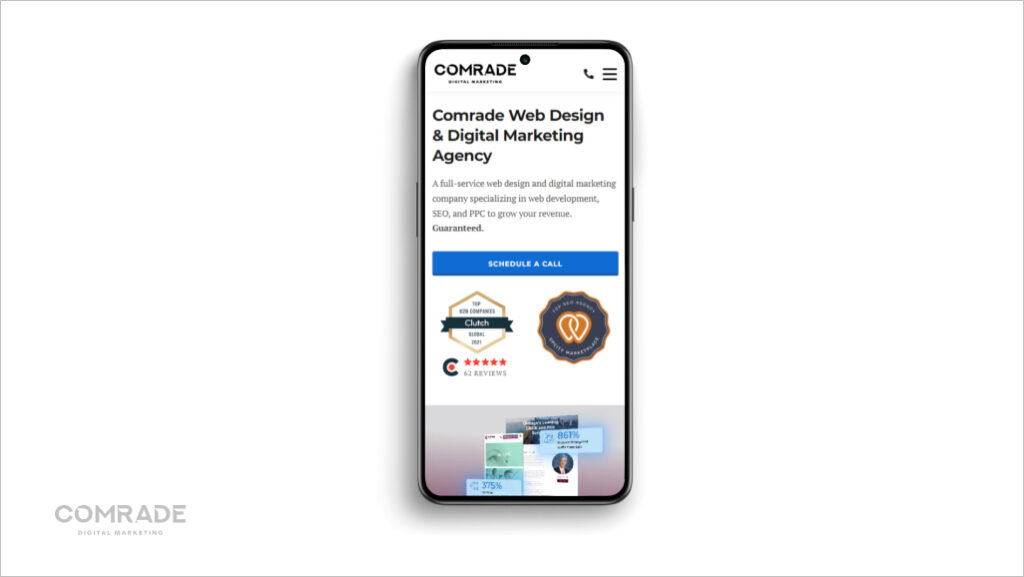
Responsive AKA mobile-friendly web design is now the norm. Ongoing web trends indicate a focus on developing thumb-friendly websites. Most mobile website visitors navigate with their thumbs. So, putting the navigation bar, menu, and contact buttons in the thumb zone (towards the center of the screen) improves UX and user experience.
Mobile devices and language change, but the thumb-friendly design will remain a critical part of web design as long as touchscreens prevail. Gestures like tapping, double-tapping, dragging, pinching, and pressing should all occur within the thumb zone. Mobile navigation used to be a pragmatic dropdown list of links. However, the latest web design trends currently tend to favor full-screen overlays to accommodate social buttons and other useful content.
4. Personalized Content
Many designers will advise organizations to display customized content based on user behavior. For instance, if a user spends time on a lounge decor web page, the next time they visit the home store’s website, it will display relevant content like recently viewed items or wish list products to increase conversions.
Personalized content is effective for eCommerce websites to decrease abandoned carts and maintain conversion rates. Customers are more engaged with ads tailored to their interests. Relevant and personal messages that cater to their pain points should be delivered across the entire customer journey, particularly through web design, as most consumers purchase via websites.
5. Dark Mode
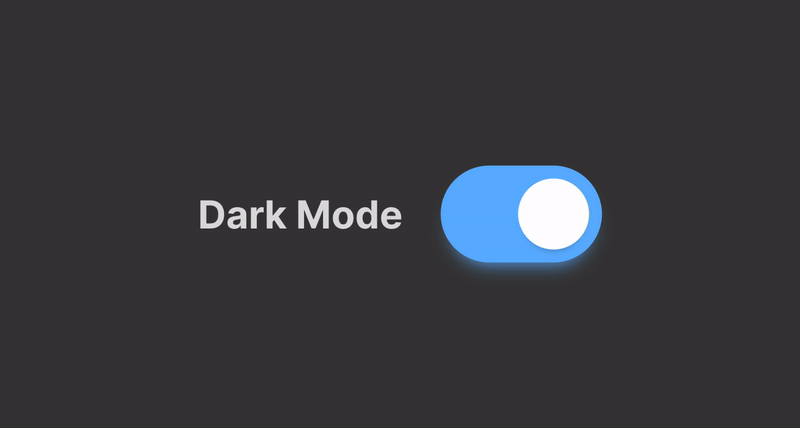
The human eye locates brighter things easier in dark mode. While there’s conflicting evidence on whether dark mode, i.e., having a black background is healthier for eyesight, it’s one 2024 website design trend that has permeated social media and Gmail, which now offers dark mode toggles.
For websites with image-heavy design elements, dark mode heightens contrast, leaving a stronger impression of what organizations have to offer. As well as being sleek, chic, and easy on the eyes, dark mode web designs can also save battery life in low-light environments. Dark mode’s rise to popularity has much to do with minimalism which has become the bread and butter work of many web designers over the past decade.
6. Minimalism
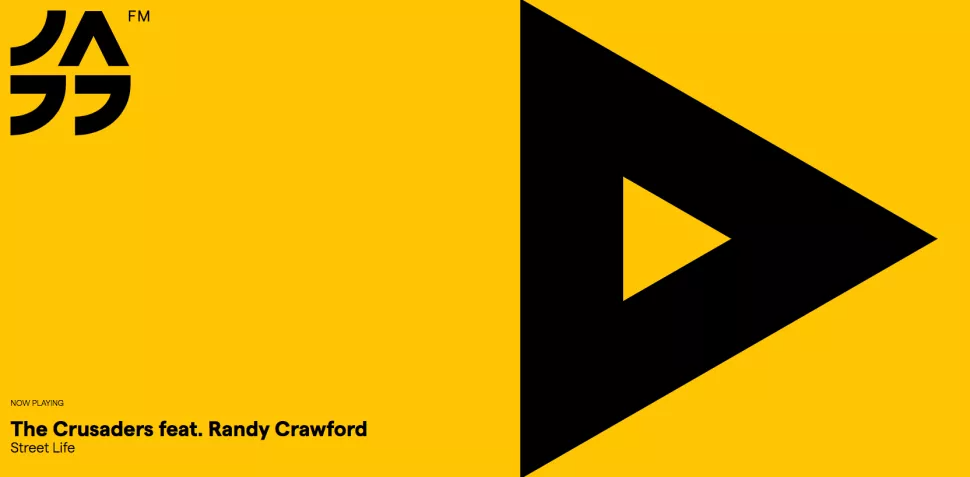
It seems minimal design refuses to quit the web design world. Less than a visual style and more a design principle, minimalism is based around using only essential flat design elements like basic geometric shapes, clean text, limited color palettes, straight lines, and white space to create harmonized and functional design.
In 2024, there has been a shift toward Neo-brutalist design trends, which builds upon the starkness of minimalism. Brutalist-style websites favor bare-bones unstyled HTML, plain backgrounds, asymmetrical layouts, default computer fonts, and non-photoshopped images. This web design trend marries the rawness of Brutalism with minimalist restraint, offering arresting graphic design, frequently adopted by creative businesses.
7. Maximalism
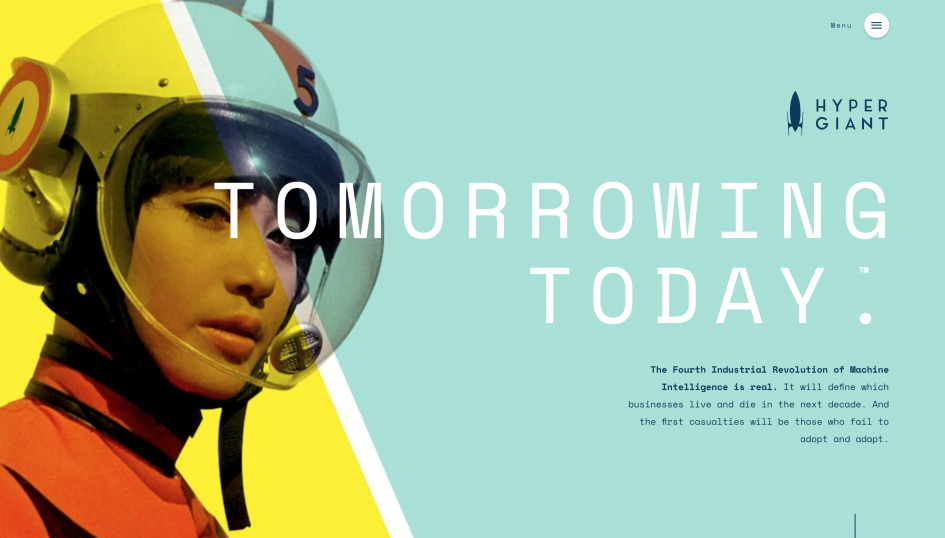
Considered the opposite of minimalism, this no-holds-barred approach involves the embrace of excess, bold typography, loud color combinations, and contrasting patterns and motifs, adding distinct visual flair to web design. When done correctly and refined, it can easily generate visual interest and capture a user’s attention quickly.
Maximalism defies minimalist constraints, leaving room for spontaneity. Youth brands linked to street culture, musicians, agencies, and fashion labels gravitate towards maximalist landing pages with mixed media collage, incorporating large decorative fonts, artistic textures and animation. In this regard, both minimalism and maximalism achieve the same effect. Ultimately, the target audience and business values determine web design.
8. Organic Shapes
Underpinned by organic or fluid shapes, organic design trends for 2024 draw on nature for inspiration. It is influenced by an increased focus on sustainability and environmentalism, featuring warm, earthy colors, natural shapes and a more organic texture. Organic web designs bode well for beauty, home decor brands, boutique hotels, and spas that want to instill a sense of calm into their online presence.
Organic shapes and patterns—anything that isn’t constrained or straight and unbending—have fluidity and flow. Think of clouds, waves, and undulating hills. These liquid shapes can be background patterns or used to isolate different sections, offering a softer, more organic feel to a website. Curved shapes, for instance, make a web page feel more approachable.
9. Vector Art
For 2024 web design trends, you can expect an increase in “DIY” looking graphics to create relatable interfaces that bridge the gap between on and offline. Vector art may include scribbles, doodles, messy cutouts, and analog textures like crayons and paint made on illustration software. It imbues web design with a sense of personality through imperfect, handmade artwork.
Flat vectors will also be reinvigorated with bold outlines, exaggerated fluidity, and sometimes rendered in 3D. This year’s web design trends reveal web designers are turning to Ukiyo-e artists of Japan’s Edo Period for inspiration. The most famous work in this style is The Great Wave off Kanagawa, boasting thick outlines and limited perspective.
10. Retro
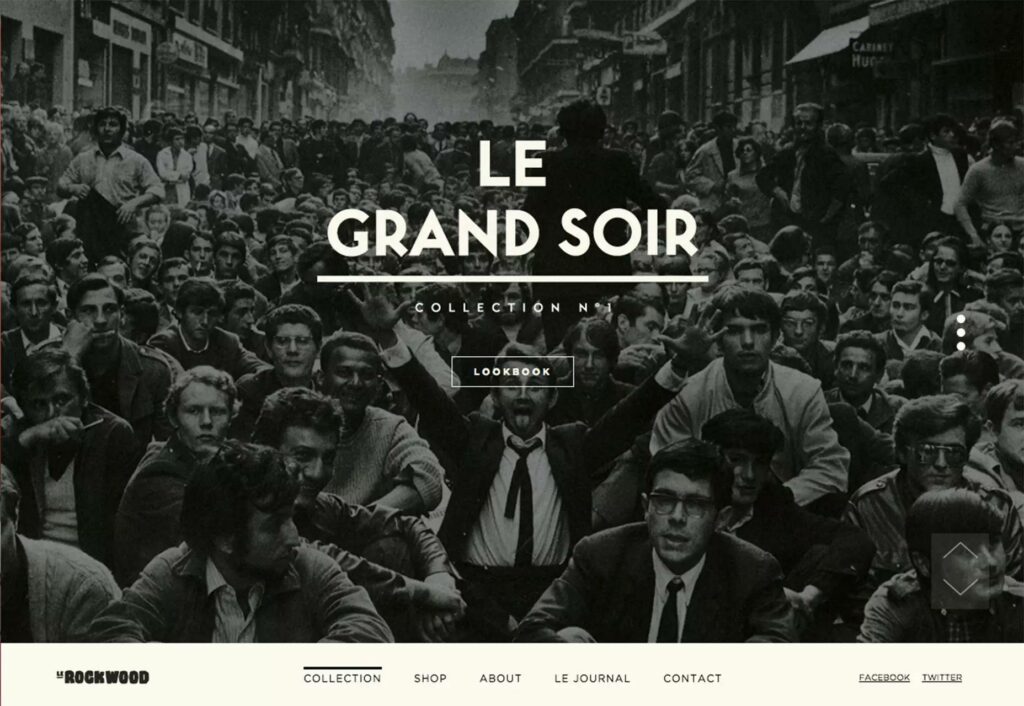
The 2020s were once considered the future of web design. Now, we’re moving away from polished minimalism and embracing nostalgia for website inspiration, specifically from the 90s. Serif fonts, visible table layouts and rich and muted colors offset by visible grids give websites a subtle, retro touch that pairs well with other retro trends.
Gradient designs, prominent in the 1990s, are also making a comeback. These color transitions gradually blend from one color to another, adding depth. From image overlays to subtle textures on user interface elements, this duotone design trend was popularized by Spotify when it placed gradient photos in its campaigns and microsites.
11. Horizontal Scrolling
Instead of moving vertically on a website from top to bottom, horizontal scrolling takes visitors through a left-to-right experience, much like the way we read. A side scroll layout is an attractive and practical choice for portfolio websites and catalogs.
Horizontal scrolling offers an intuitive experience on devices like smartphones and tablets with swiping functionalities. This type of navigation is suitable for companies needing to share lots of visual content as it provides more space and avoids cluttered UI.
12. Typographic Design
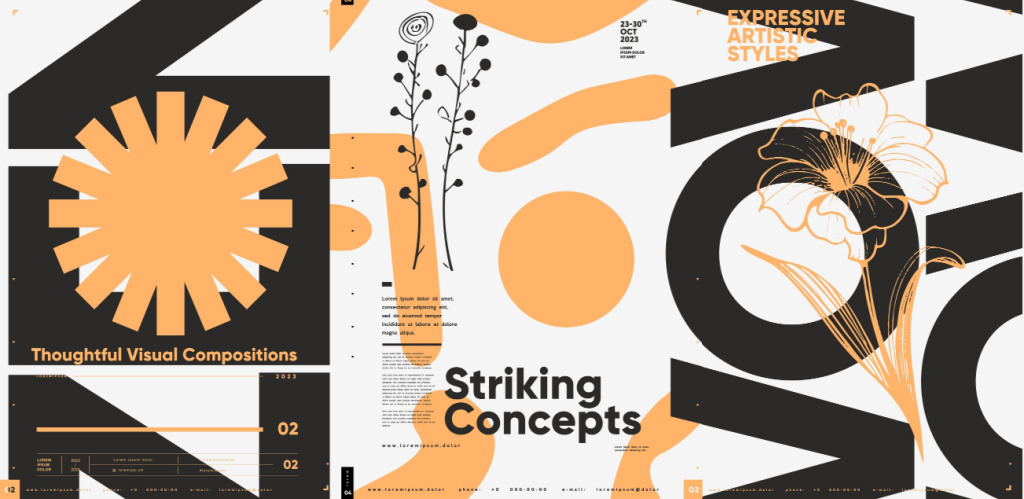
Typographic design is the art and technique of arranging type to create visually appealing and effective communication. It involves selecting fonts, adjusting spacing, and organizing text to convey a message or evoke a specific emotion. In web design, typographic elements play a crucial role in enhancing user experience and conveying brand identity. Now more than ever designers recognize the importance of clear and impactful communication. Typography allows for creative expression while ensuring readability and accessibility. With advancements in web technology, designers have access to a broader range of fonts and responsive design tools, enabling them to experiment with dynamic and engaging text layouts.
Moreover, as users increasingly access content across various devices, responsive and scalable typography becomes essential for a consistent and enjoyable browsing experience. The use of bold and custom fonts can also contribute to a brand’s unique identity, fostering brand recognition in a competitive digital landscape.
Why Following Web Design Trends is Important for Online Growth
Web design is the foundation of digital marketing. Most, if not all, digital marketing efforts are designed to drive traffic (potential leads) to a business’s website. A business can’t effectively engage with the scope of what digital marketing has to offer if it doesn’t have an intelligently designed and search engine optimized digital “storefront.”
Branding
Coherent web design establishes an initial impression and offers meaningful engagement by speaking to who and what your brand is about. Web design is a physical manifestation of a company’s personality and its ethos. Content on a website allows website visitors to trust and believe an organization’s goods and services are the right solution for them.
Users equate the experience they have on websites with the experience they’d have at a brick-and-mortar store. Because they’re bound to make countless assumptions based on your website design, it’s vital you ensure your site sends out the message you want the public to receive about your business.
User experience
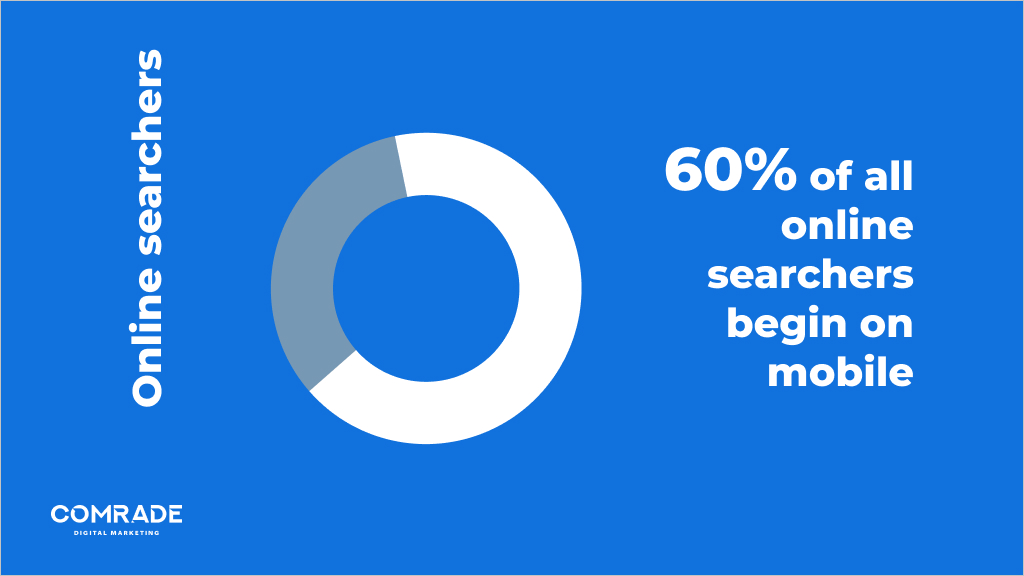
Web design begins with hierarchy. If users have a limited time to interact with your website, your web design needs to prioritize and direct them to what’s most important on your web pages. A simple and clean website structure that is responsive and uses color and design to strategically nudge users to act works best.
If people come to your website via their phones, and they have to zoom in and out to read or view images, then you’ll lose potential leads. You want to avoid excluding customers due to situational vision difficulties caused by poor design. To give you an idea, nearly 60% of all online searches begin on mobile, with some sectors reaching over 70%. Make sure your design your website in a way that will also increase conversion rates on mobile devices.
For instance, leading brands place call-to-action buttons in identifiable places, using bright colors to ensure the eye naturally travels there. Additionally, the main navigation should be near the top of the page, with the preceding links ranked based on importance, and so on. Websites should be easy for anyone—from kids to octogenarians—to use.
Optimization
Websites also have to perform well from a technical standpoint. This means investing in technical SEO and good UX design. Optimized websites and landing pages provide a seamless user experience, rank well in Google search engine results, and respond to users’ behaviors and their environment based on screen size, platform and orientation.
If you don’t optimize your website and the content on it through sound web design principles, it won’t show up on search engine results pages, and nobody will notice it. However, when you do optimize your website for search, you put your business on a global map. 53% of website traffic comes from organic search results, so SEO-friendly websites that match users’ queries will, in theory, receive 50% more traffic.
Conversions
Web design affects conversion rates through readability, calls-to-action, and being visually appealing. Content design should make it easy for visitors to read text by leaving enough white space in between the lines. Potential leads won’t bother to even skim text on a website page if it’s too dense. Therefore, most designers opt for a simple and blunt approach that’s direct and straight to the point.
Put another way: Include the most important bare necessities to grab attention and sell.
Every high-converting website has more than one proper call to action that’s clear and obvious. Visitors should always be given the option to “buy” or “get a quote.” This is one of the major ways web design improves the rate of visitors who convert into prospects. Lastly, when it comes to lead conversion, consider how the colors, interactive fonts, structure, layout, and images complement your brand.
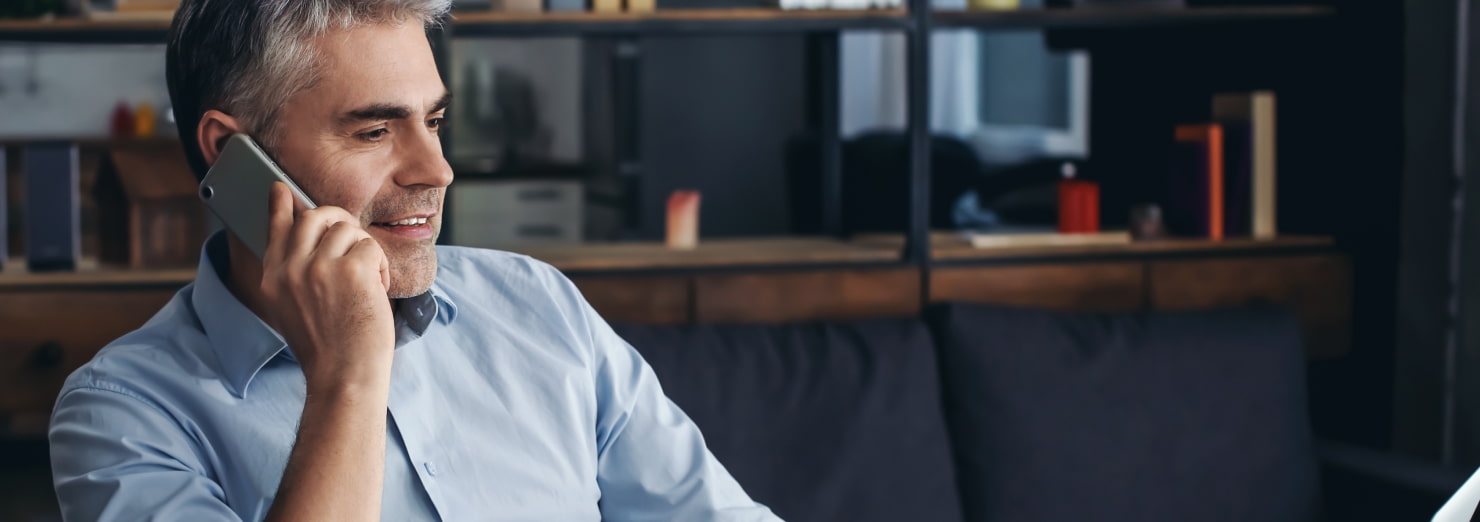
Conclusion
Websites are strong lead generators and the most natural form of marketing. Those with strategic conversion funnels take users effortlessly through the buyer’s journey and drive conversions by providing greater user satisfaction than sites haphazardly tossed together with little regard for customer intent and needs.
Critical to any web design is the central focus of being able to answer visitors’ needs as efficiently as possible. Working with the web design team at Comrade Digital Marketing Agency will help you build concise messaging and strong calls to action through beautiful and functional design.
Because we’re up-to-date with 2024 website design trends, our digital designers and strategists will make it easy for your customers to get in touch with you, and you’ll find it simpler to facilitate conversions and engage with them. Ready to transform your website? Contact us today!.
Frequently Asked Questions
Where can I find your company?
Comrade originates in Chicago, but we worked all around the United States. We can help your business grow and increase revenue whenever you are. We have offices across most major cities in the US. For example, we can offer digital marketing services in New York or Indianapolis. You can even find our internet marketing experts in San Francisco! If you want to know more about our Houston digital marketing agency or find out how exactly we can help you, contact us via the phone or email.


